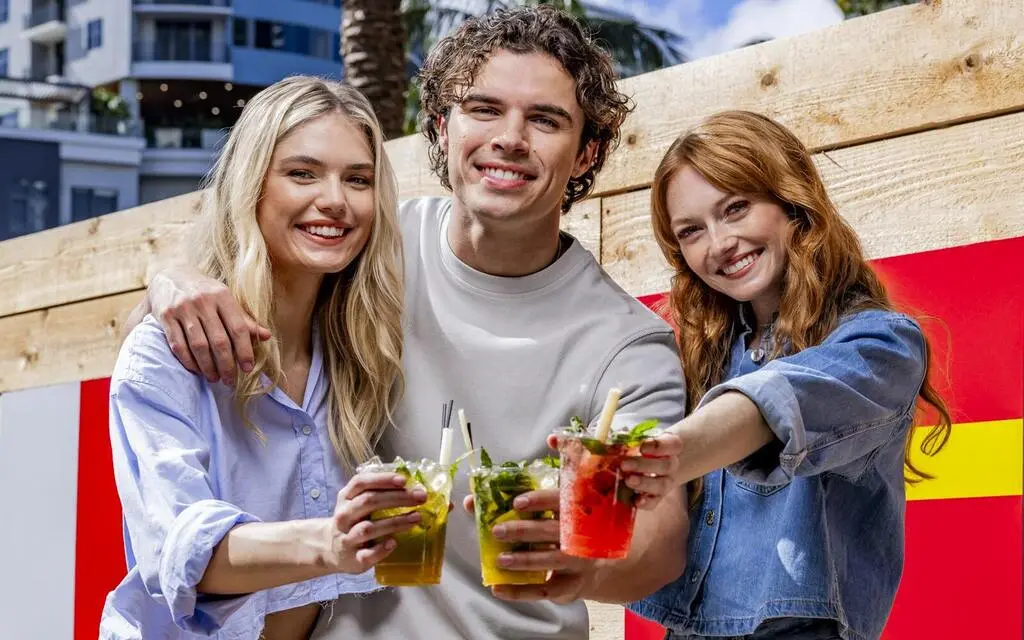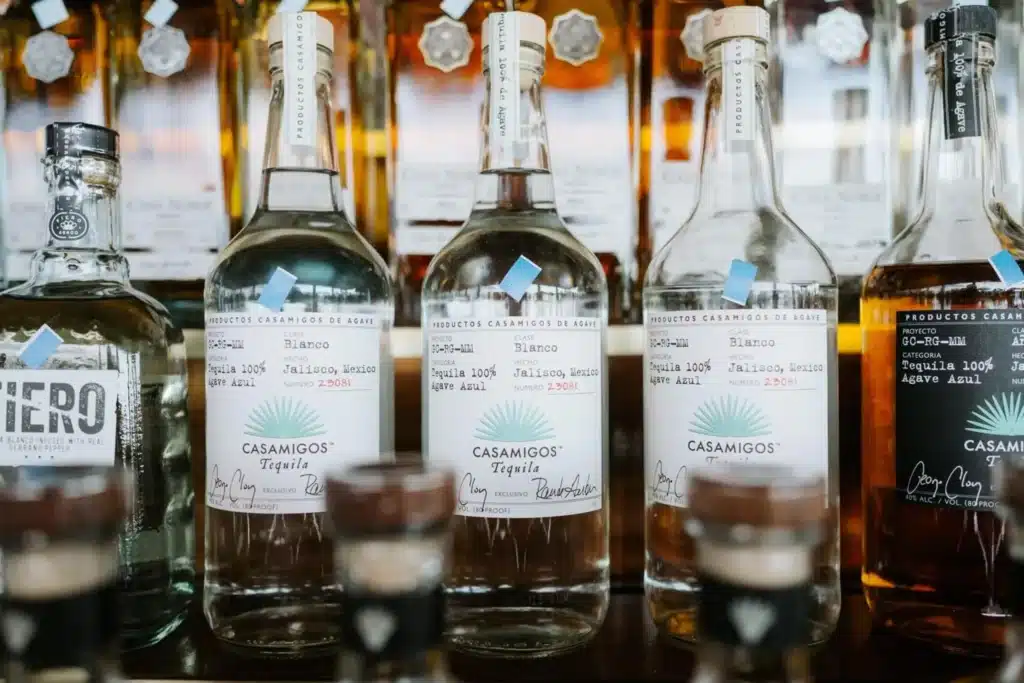There’s something magical about watching a skilled bartender craft the perfect cocktail. From the smooth handling of tools to the precise pouring of ingredients, the whole process appears almost effortless—but achieving that level of precision takes a deep understanding of the art and science behind each drink. Whether you’re a home enthusiast or someone looking to refine your skills, learning how to create cocktails with bartender precision is about more than just following recipes. It requires mastering techniques, understanding flavor balances, and using the right equipment. In this post, we’ll walk you through the key steps to elevate your cocktail-making skills to professional levels.
1. Understanding the Foundation: Ingredients and Proportions
At the heart of every great cocktail are its ingredients. Whether it’s the simplest gin and tonic or an elaborate, multi-layered cocktail, precision starts with understanding how ingredients work together. For most cocktails, the core components include:
- Base spirit: This forms the foundation of your cocktail. Vodka, gin, rum, whiskey, or tequila are often the star players.
- Modifiers: These are liqueurs, bitters, or vermouths that add complexity and balance to your drink.
- Sweeteners: Sugar syrups, honey, or agave bring a sweetness that counters the bitterness or tartness.
- Sour components: Citrus fruits like lemon or lime help balance sweetness and add brightness to the drink.
- Garnishes: Don’t overlook this final touch! A well-chosen garnish adds aroma, flavor, and visual appeal.
While the ingredients themselves are crucial, proportions are just as important. Many classic cocktails follow basic ratios—for example, a sour drink like a daiquiri often follows a 2:1:1 ratio (2 parts spirit, 1 part sweetener, 1 part sour). Bartenders know that deviating from these ratios can throw off the drink’s balance, so precision in measuring is essential.
Tip: Always use a jigger!
A jigger is a bartending tool that ensures accuracy in measuring liquids. It eliminates guesswork, helping you pour the exact amount of spirit or mixer every time. Bartenders use it for a reason—precision counts.
2. Mastering Technique: Stirring vs. Shaking
One of the most common mistakes people make when creating cocktails is misunderstanding when to stir versus shake. Knowing when to apply each technique is a hallmark of a professional bartender and contributes directly to the quality of your drink.
Shaking: This method is used when you need to fully incorporate ingredients that don’t naturally mix well, such as citrus, eggs, or cream. Shaking also chills and dilutes the drink, making it smoother and well-balanced. To shake a cocktail properly, fill a cocktail shaker with ice, add your ingredients, and shake vigorously for 10-15 seconds. When done correctly, the outside of the shaker will become frosty.
Stirring: For cocktails that are spirit-forward (like an Old Fashioned or Manhattan), stirring is the preferred method. Stirring chills the drink while maintaining clarity and texture. The key is to use a bar spoon and stir gently over ice, usually for around 20 seconds. You want to blend the ingredients without introducing air, ensuring a smooth mouthfeel.
Tip: Always shake with ice cubes, not crushed ice. Crushed ice dilutes the drink too much, leading to a watery cocktail. Similarly, use larger ice cubes when stirring to maintain control over dilution.
3. Ice Matters: The Science of Chilling Without Over-Diluting
Ice is more than just a means to cool your drink—it plays a vital role in the overall cocktail experience. Professional bartenders understand that the size, shape, and temperature of ice affect how quickly it melts and how much it dilutes the cocktail.
- Big cubes or spheres: These melt slowly, making them ideal for spirit-forward drinks like whiskey on the rocks or Negronis. They chill the drink without excessive dilution.
- Crushed ice: Perfect for tropical drinks like mojitos or tiki-style cocktails, as it chills the drink quickly and adds a refreshing level of dilution.
- Kold-Draft ice or hand-carved ice: Many high-end bars use special ice because it’s clear, dense, and melts slower. Investing in quality ice trays or ice molds can seriously elevate your cocktail game at home.
Tip: If you want to get extra fancy, use filtered water to make ice—this prevents any off-flavors from sneaking into your drink.
4. Perfecting Garnishes: A Feast for the Eyes and Nose
In the world of cocktails, garnishes are much more than a decorative touch—they play an essential role in adding flavor and aroma. Think of the garnish as the first impression of your cocktail. A simple sprig of mint, a citrus peel, or a cherry can elevate the experience, both visually and aromatically. Here’s how to nail your garnish game:
- Citrus peel: Use a peeler or a sharp knife to slice a long strip of lemon, lime, or orange peel. Before placing it in the drink, hold the peel over the glass and twist it to release the oils. This adds a burst of fragrance that enhances the flavor.
- Herbs: Fresh herbs like mint or basil are fantastic for cocktails like mojitos or juleps. Smack the herbs lightly before adding them to the drink—this releases their aromatic oils.
- Edible flowers: These can be a stunning and sophisticated addition to your cocktail, but make sure they’re safe to consume. Flowers like pansies, nasturtiums, or hibiscus can be a delightful and unexpected garnish.
Tip: Always use fresh ingredients for garnishes—limp or old herbs and fruit will detract from the cocktail’s appeal.
5. Balancing Flavors: The Key to Bartender-Level Cocktails
Creating a well-balanced cocktail is akin to cooking: it’s all about how the flavors interact with each other. A great bartender knows how to achieve a delicate balance between sweetness, sourness, bitterness, and alcohol.
- Sweetness: Too much sugar can overwhelm a cocktail, but the right amount balances sour or bitter notes. Simple syrup is a staple sweetener for its neutral flavor, but honey, agave, or flavored syrups can add complexity.
- Sourness: Acidic ingredients like lemon or lime juice cut through the sweetness, providing a refreshing balance. Fresh-squeezed citrus is always preferable to bottled for that vibrant, sharp taste.
- Bitterness: Bitters are an essential part of many cocktails. A few dashes of Angostura or orange bitters can provide depth and complexity to an otherwise simple drink.
- Alcohol: Your base spirit sets the tone for the entire cocktail. A premium spirit will often lead to a more refined drink, but even mid-range spirits can shine with the right mix of ingredients.
Tip: Taste as you go. Bartenders often sample their creations before serving to make sure the balance is just right. Don’t be afraid to make adjustments to suit your palate.
6. The Right Tools for Bartender Precision
Professional bartenders have an arsenal of tools at their disposal, and if you want to craft cocktails like a pro, having the right equipment is crucial. Here are a few must-haves for precision:
- Jigger: As mentioned, this is essential for accurate measurements.
- Cocktail shaker: A Boston shaker or cobbler shaker will help you blend ingredients smoothly.
- Bar spoon: This long, slender spoon is perfect for stirring drinks and layering ingredients.
- Strainer: A Hawthorne or fine-mesh strainer ensures that you pour only the liquid into the glass, keeping any ice shards or fruit pulp out.
- Muddler: For drinks that require muddling, like mojitos or caipirinhas, a muddler helps to crush ingredients and release their flavors.
Tip: Clean your tools between each use. Residual flavors from previous cocktails can interfere with your next drink.
7. Practice and Patience: The Final Ingredients for Precision
Bartenders don’t become masters overnight. It takes practice, patience, and a lot of trial and error. Start with simple cocktails and work your way up to more complex ones. As you refine your skills, you’ll begin to develop an intuitive understanding of how different ingredients and techniques affect the final result.
Tip: Keep a journal of your cocktails. Record the ingredients, techniques, and any adjustments you made. Over time, this will help you refine your approach and create cocktails that are uniquely your own.
Conclusion: Crafting Cocktails Like a Pro
Creating cocktails with bartender precision is both an art and a science. By understanding the importance of balance, mastering essential techniques, and using the right tools, you can bring the level of care and expertise found behind a professional bar into your own home. Remember, it’s not just about following recipes—it’s about mastering the techniques and paying attention to details that make all the difference in the final drink.
Whether you’re mixing up a classic cocktail or experimenting with new flavors, these tips will help you create cocktails that are not only delicious but also beautifully executed. With practice and attention to detail, you’ll soon be crafting drinks with the precision and flair of a seasoned bartender.
Now, all that’s left to do is pour, garnish, and enjoy! Cheers!














